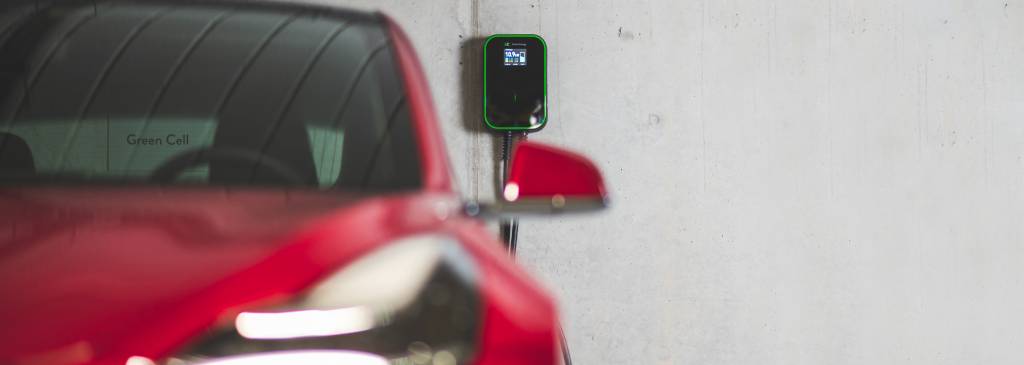In order to charge an e-car you only need special cables, which are usually provided with the car. One of the cables is used to connect the vehicle to a regular socket, while the other one is designed for a public fast charging station. Neither of these solutions is perfect, though. Another option is a wallbox.
In this article you will find out:
- how to charge an electric car,
- what are the advantages of private charging stations,
- what to look out for when choosing a wallbox,
- how to install a home-based charging station for an e-car.


How to charge an electric car
Electric vehicles may be charged with alternating or direct current. The former way is longer. The exact time depends on the source of power and on the individual components of the car. A rectifier converts alternating current into direct current and supplies it to the battery. In the latter case, no rectifier is needed, so direct current goes straight to the battery. It obviously reduces the time needed to recharge your e-car.
Owners of electric vehicles can choose from among 4 available ways to recharge their cars:
- Fast charging stations – with direct current up to 150 kW. This is by far the fastest way of replenishing a car battery.
- Public AC charging stations – much slower, with alternating current up to 22 kW.
- An electric socket – the slowest, but the most convenient method. You can replenish the car battery with alternating current up to 2.3 – 3.7 kW.
- Wallbox – this solution combines the advantages of a public station and a socket at home. Since it’s exceptionally functional, we may want to have a closer look at it.


The advantages of a home-based charging station
Wallbox is a kind of a home-based charging station you can install in your garage. When compared to a regular socket, it will recharge your car battery much faster. It has a power of up to 22 kW, although half this value is enough for most drivers.
With a wallbox you can recharge your electric car without leaving your home and enjoy the charging speed typical of public stations. This is an intuitive device, easy to operate and safe to use. It has a watertight and robust case and an automatic irregularity detector. The device operates in a wide range of temperatures and comes with a display screen, which shows you the charging parameters.
A private charging station does not take up much space, so you can install it in the wall of your garage or on a post near your parking space. A wallbox is connected directly to your home grid, which means it’s cheaper than using a public charging station.
What to look out for when choosing a private car charging station?
A home-based charging station should match a specific car. There are two basic criteria you need to consider – power and connector type.
You could think the higher the power, the better. This is true in theory, but in practice most electric cars have certain limitations, which prevent them from making the most of the best wallboxes. The rectifiers usually come with a power of 3.6 – 7.4 kW. In rare instances it may be 11 kW, and in a very few cases you can find a rectifier with a power of 22 kW. You don’t have to spend an excessive amount of the most powerful charger you can find if you know it won’t speed up the charging process.
As regards connectors, you can find wallboxes with Type 1 or Type 2 connectors, but in Europe only the latter are available. The device can come with an outlet or an integrated cable with a plug. A charger with an integrated cable is convenient, but less versatile. You can connect any car to a wallbox with an outlet, provided you have a relevant cable.

Installing a wallbox
Before you install a car charging station, you need to verify the capacity of your home grid. If the connection power does not accommodate a wallbox, you will have to modify the grid together with your energy provider. When the system is ready to accommodate the new device, you should get a qualified electrician to install the wallbox. It may take up to two business days.
The electrician will prepare the necessary cables, including a special one to connect the switchboard to the place where you want to have your wallbox. Once it’s ready, the conductors of the power cable need to be connected. At this stage, some programming might be necessary. Once the charger is connected and programmed, the electrician should instruct you on how to use it.
If you’re looking for an efficient electric car charger , pick one of the Green Cell products available in our online store!
Veronica Jones
Related posts
Most viewed entries
- Polish Inventors Who Changed the World – Do You Know Them All?
- The Scariest Myths About Electronic Devices – Halloween 2024
- The history of bicycle – International Bicycle Day
- Electricity in a camper van on holiday – a conundrum easily solve
- Off-grid installation on a plot. Is it worth it?
- Charging your electric car at home without a wallbox

